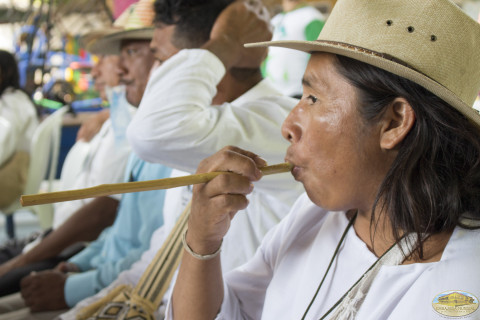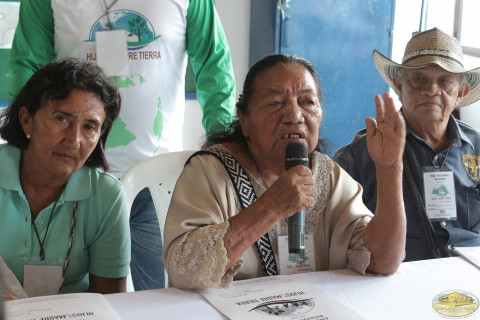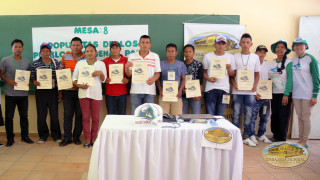Indigenous peoples unite for the restoration of Mother Earth
The 8th Regional Encounter of the Children of Mother Earth took place in María Montessori School in the city of Valledupar, with the objective of establishing open spaces for dialogue to make known the understanding and ancestral knowledge for the restoration of Mother Earth. This event was organized by the Global Embassy of Activists for Peace (GEAP) in Colombia.
 The activity called upon the communities of the indigenous people: Kogui, Wiwa, Arhuacos, Yukpa, Zenú, Embera Katío, and Mokaná (ethnicities of the Caribbean Region), who provided solutions for the care and protection of Mother Earth.
The activity called upon the communities of the indigenous people: Kogui, Wiwa, Arhuacos, Yukpa, Zenú, Embera Katío, and Mokaná (ethnicities of the Caribbean Region), who provided solutions for the care and protection of Mother Earth.
As part of the development of the meeting, the participants gathered in 11 work groups classified by themes, through which proposals were presented about the conservation of the natural resources, climate change, biodiversity, cultural and musical values, amongst others.
This action plan is part of the International Program Children of Mother Earth that the GEAP develops in accordance with the Sustainable Development Goals (SDGs) agreed in the 2030 UN World Agenda for the nations.
Collective Participation
David Peluffo, coordinator of the program in Colombia, together with the Activists for Peace welcomed all the inhabitants of the indigenous peoples who attended the regional meeting; likewise, he emphasized the importance of this collective participation recognizing their ancestral knowledge.
"The rescue and disclosure of cultural values and ancestral music" was one of the presented proposals, and as part of Pedro Arrieta's dynamic, representative of the Zenú community, he interpreted a song inspired in the deterioration and loss of his habitat.
Similarly, during the event, the Inter-American Environmental harter was socialized, delivered by the executive president of the GEAP, William Soto Santiago, to the secretary of the Organization of American States (OAS), Luis Almagro, in CUMIPAZ Paraguay 2016. (See press release of the official delivery of the Inter American Environmental Charter)
One Village
"I will continue to participate more, in order to get to know more with other indigenous people," said the Arahuaca community mamo, Fredy Chaparro, during his dissertation.
"They give us an example because they say that the only difference there is between them is the language, but that they are brothers although they belong to different ethnic groups; they recognize themselves as one village," added William Rivas, GEAP volunteer.
 Communication Spaces
Communication Spaces
The work groups had a group of observers, among them, Mr. Franklin Daza, in representation of Mr. Augusto Ramírez, mayor; Andrés Fernández, Secretary of Environment of Caesar; and Adís Quintana, representative of the Ombudsman's Office.
Similarly, Libia Alvis Barranco, representative of the deanery of the Popular University of Cesar; Ruth Margarita Ariza, anthropologist member of the Departmental Cultural Heritage Council; and Jorge Araujo of the Secretariat of Education.
These communities face different territory problems and the risk of their cultural identity, however, the spaces of communication offered by the Encounter Children of Mother Earth strengthens their rights contemplated in the "United Nations Declaration on the Rights of Indigenous People."
From May 2016, to the present, the GEAP in Colombia has developed eight regional events and one International Encounter in Uribia - La Guajira.

